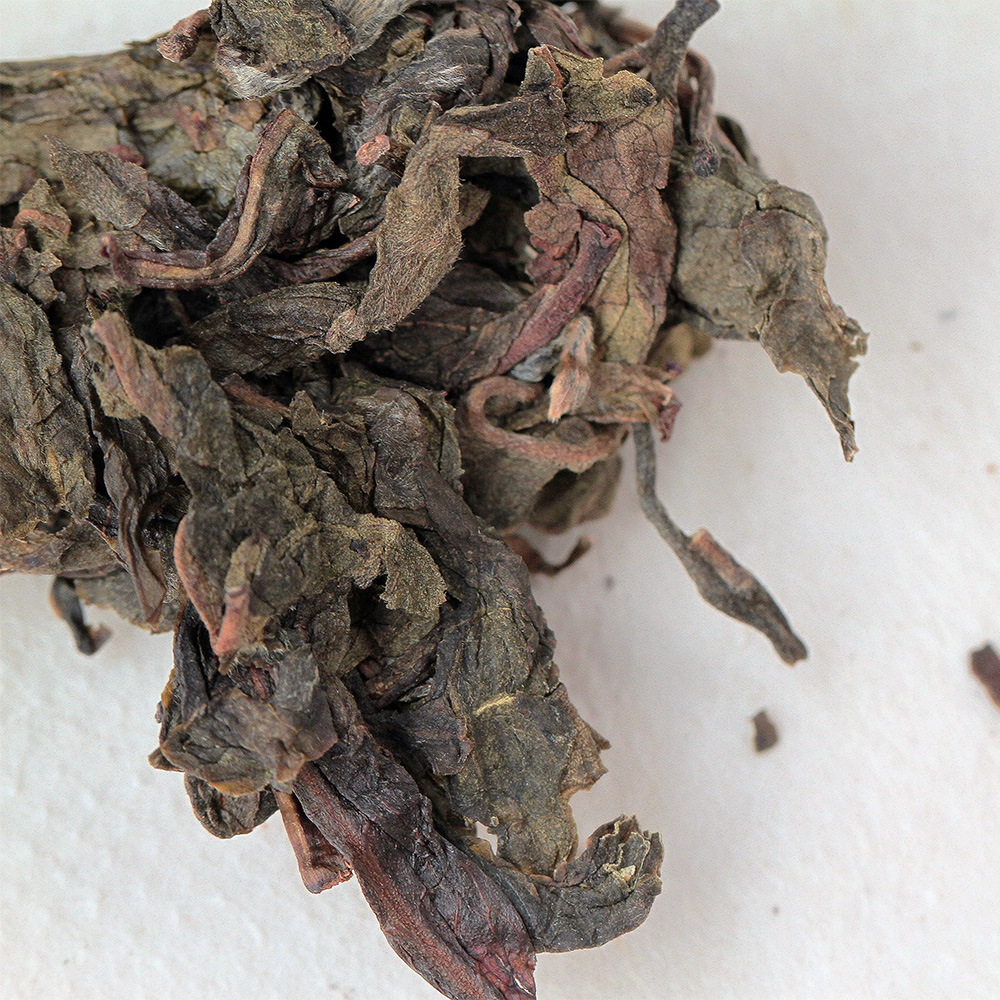Xi Banshan Huangpian 2014



Xi Banshan Huangpian 2014
handmade item
materials: big-leaved arbor tea leaves from the town of Mengku
shape: brick
dimension: 14 x 9 x 2 cm / 5.51 x 3.54 x 0.79 in
weight: 200 g / 7.04 oz
Handmade with tea leaves picked from Xi Banshan in 2014, this well-balanced sheng pu-erh is represented by its initial vegetal taste, which soon transfers to a honey flavour. It is a sheng pu-erh that can be easily enjoyed on a daily basis.
Mengku town is located at the most northern region of Shuangjiang county, under Lincang city in southwestern Yunnan. The total area of the town is 475.3 sq km; two mountains, one river and one flatland characterize its geographical features. Nanmeng river flows in between Ma’an and Bangma mountains. Ma’an mountain sits on the east-bank of river - the locals prefer calling it Dong Banshan, meaning east-bank mountain. Similarly, Bangma mountain is known as Xi Banshan (west-bank mountain) as it is located on the west-bank.
The name Laohuangpian literally means “old yellow leaves” in Chinese. Some also call it Huangpian, meaning “yellow leaves”. The picking standard of pu-erh tea has been 1 bud, with up to 3 leaves, in rare occasions it goes up to 4 leaves. During processing, smaller and suppler tea buds are easily getting rolled up into cord-like strands, whereas the bigger and broader leaves aren’t. As a result the shape of the 3rd and 4th leaves is not as ideal after processing. For the best aesthetics of final product to the consumers, tea farmers usually filter out these bigger leaves so that the remaining ones are neat and symmetrical when pressed into bing. These bigger leaves are often kept by the tea farmers themselves and are rarely found in the market. Unknown to the general public, these larger and plumpish leaves are more flavourful and sweeter as it has been grown on the trees for a longer period of time. Laohuangpian undergoes the same production method as sheng pu-erh and possesses the same quality. This tea is worth trying if you wonder what the local ethnic groups and tea farmers from the Lincang region are enjoying on their own.
Puzzled on any unfamiliar terms? Look them up:

